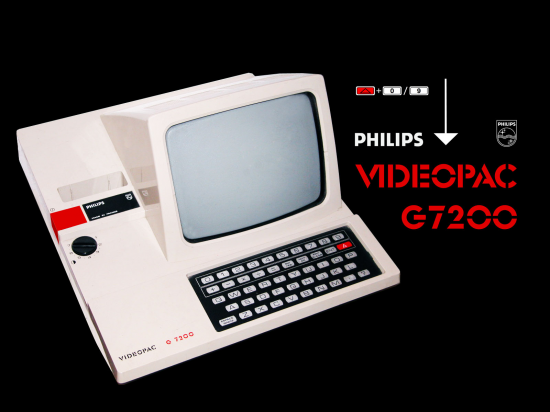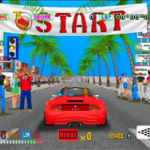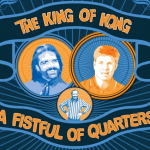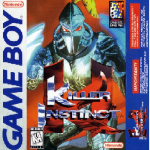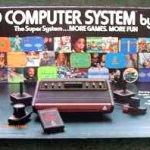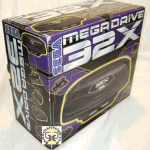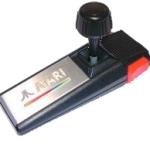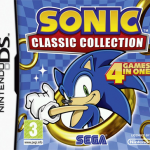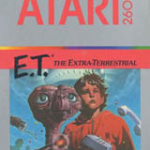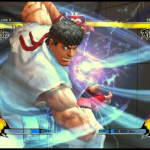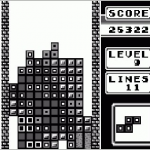After a few years of producing Pong consoles, Magnavox released a cartridge based system called the Magnavox Odyssey² in 1978. This was their second cartridge system, after their pioneering
Magnavox Odyssey, however it was their first to to use programmable ROM cartridges. It was also known as the Philips Videopac G7000 in Europe, the Philips Odyssey in Brazil, and the Philips Odyssey² in some parts of the world. It even had a very limited release as the odessei2 in Japan.
The console came with two square controllers, with a fire button at the top left hand side (just like the ones that came with the Atari 2600). The console itself had a pressure pad style keyboard (membrane keyboard). This was included to target the educational market and allow programming.
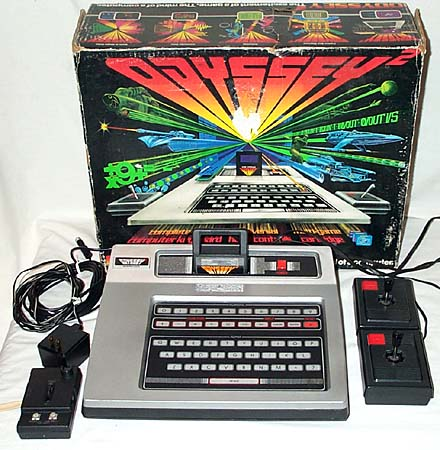
One of the biggest selling points of the console was the option to purchase a Speech Synthesiser add on unit called the Voice. The unit attached to the top of the system and added speech and improved sound effects in games. The Voice was only released in the States.
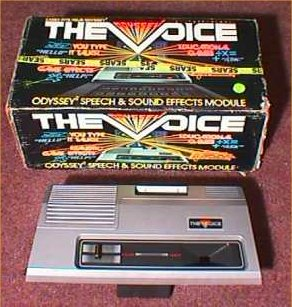
The absence of 3rd party game developers until near the end of the consoles life meant that the Magnavox Odyssey² did not have mainstream success in the USA, selling about 1 million systems in 5 years. It was incredibly popular in Europe, selling as the Philips Videopac G7000, and in Brazil, where it was sold as the Philips Odyssey.
Due to the success of the machine in Europe, games were offered two extra modules. A chess module called the Videopac C7010 Chess Module was released which helped make the console powerful enough to run a chess game. Also released was the Home Computer Module, which let users program in Microsoft BASIC.
Specifications
The Magnavox Odyssey² used the 8-bit Intel 8048 CPU, which was clocked at 1.79 MHz. It had 64 bytes of RAM, 128 bytes of VRAM and 1kb of ROM.
The system could display a resolution of 160×120 pixels. Developers could choose from a palette of 16 colours but could only use 8 of these at the one time. For audio, the system used the Intel 8244 chip.
Complete Game List
The following is a list of the official games which were developed by Magnavox (Phillips) themselves:
4 in 1 Row
Air Battle
Air-Sea War – Battle
Alien Invaders – Plus
American Football
Backgammon
Baseball
Basket Game
Battlefield
Blackjack
Catch the Ball – Noughts and Crosses
Chinese Logic
Clay Pigeon
Computer Programmer
Conquest of the World
Cosmic Conflict
Crazy Chase
Dam Buster
Depth Charge – Marksman
Electronic Billiards
Electronic Soccer – Electronic Ice Hockey
Electronic Table Volleyball
Electronic Volleyball
Flashpoint
Flipper Game
Freedom Fighters
Golf
Gunfighter
Helicopter Rescue
Interpol
Jumping Acrobats
K.C.’s Krazy Chase!
Killer Bees
Labyrinth Game – Supermind
Las Vegas Gambling
Laser War
Looney Balloon
Mathematician – Echo
Monkeyshines
Morse
Munchkin
Musician
Neutron Star
Newscaster
Nightmare
Norseman
Pairs – Space Rendezvous – Logic
Pickaxe Pete
Playschool Maths
Quest for the Rings
Race – Spin-out – Cryptogram
Route66
Samurai
Satellite Attack
Secret of the Pharos
Shark Hunter
Skiing
Space Monster
Spiderman
Stone Sling
Super Bee
Take the Money and Run
Tenpin Bowling – Basketball
Terrahawks
The Blobbers
The Great Wall Street Fortune Hunt
The Mousing Cat
Time Lords
Trans American Rally
Turtles
Some 3rd party games were developed too. Parker released Frogger, Popeye, Q*bert, Super Cobra. Spiderman and Tutankham. Ectron released a game called MI/PT and Imagic released two games: Atlantis and Demon Attack.
Variations
Although the Magnavox Odyssey² was released across the world as many different things, the console itself remained unchanged, unlike many other systems which changed a lot when released in a different territory.
However, one of the biggest variations of the system was in Europe in 1983 with the Philips Videopac G7200. The G7200 was essentially a Magnavox Odyssey² integrated with a black and white monitor, which made it look like a home computer rather than a games console. The G7200 was also released as the Schneider 7200 and Radiola JET 27.
Phillips later released a smaller version of the G7200 called the Phillips N60.
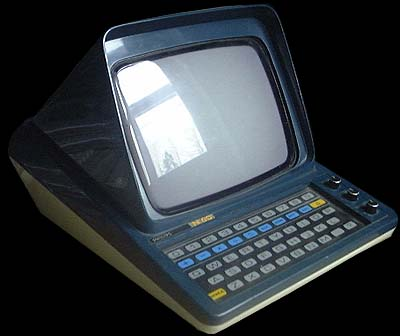
Videos
Links
- o2em – A Magnavox Odyssey² emulator.
- The Voice — Odyssey 2 Speech Synthesizer – Features a good magazine scan of an article from the 70s.
- Magnavox Odyssey 2 Ad from 1980
